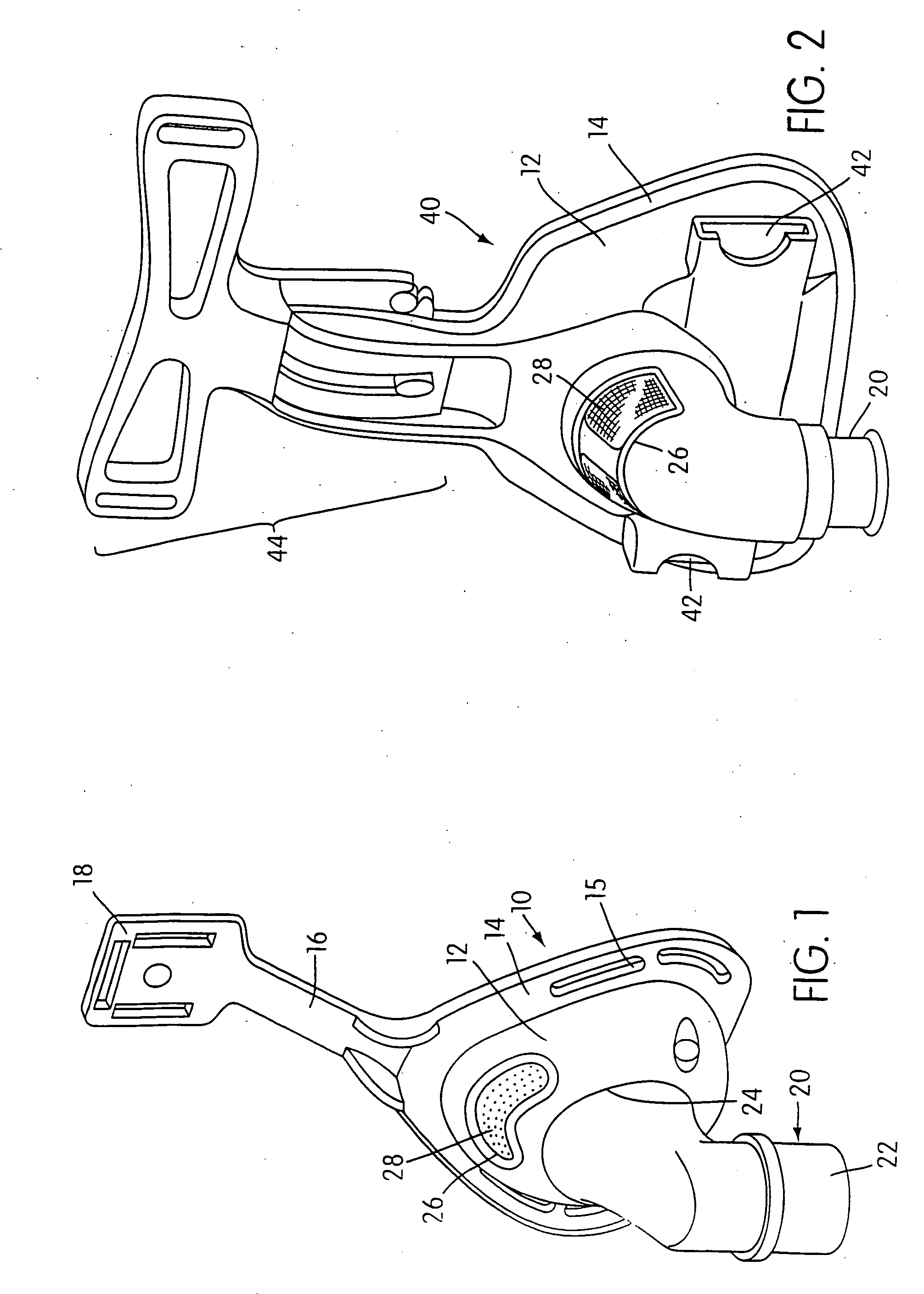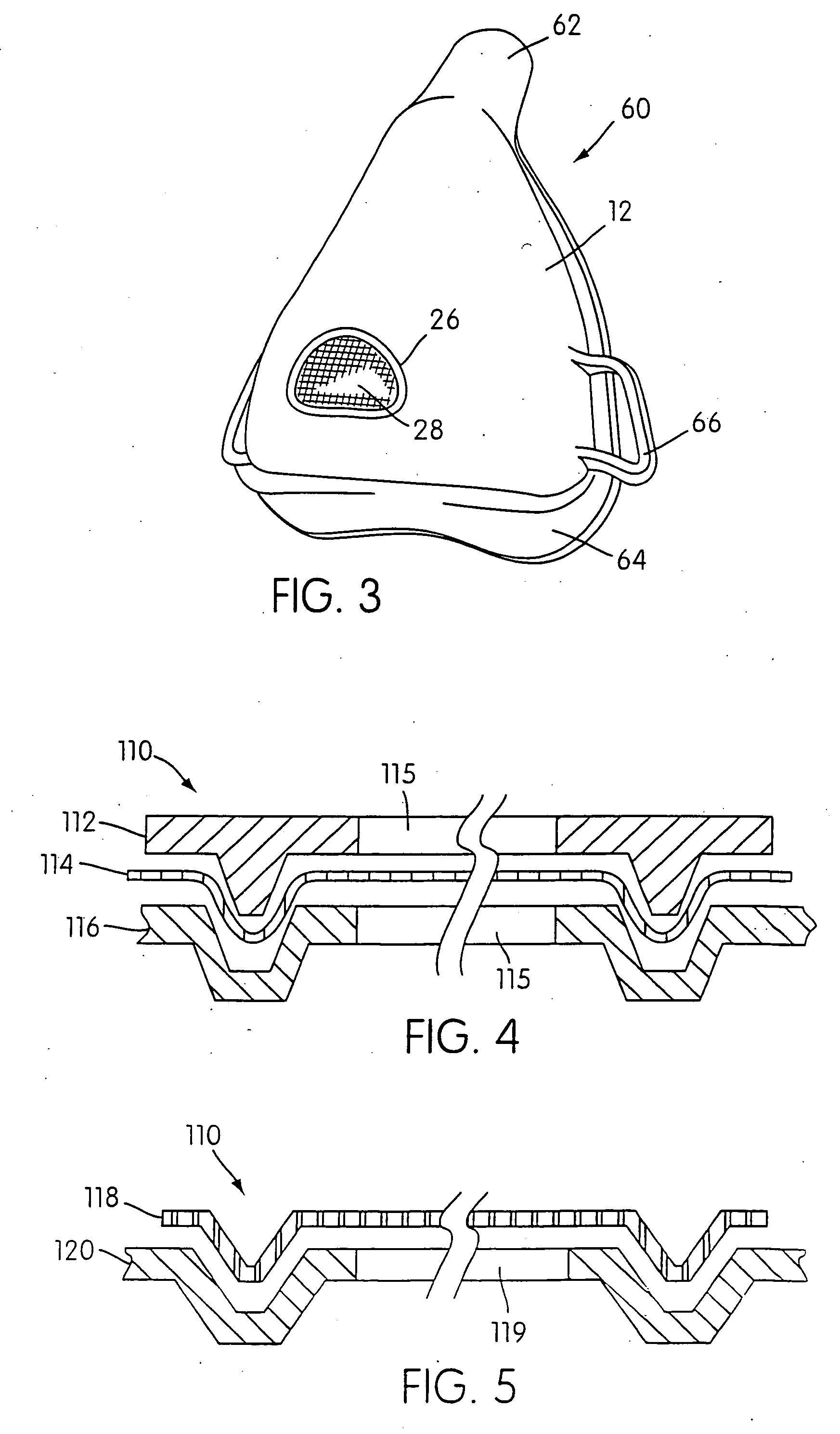Respiratory mask having gas washout vent & gas washout vent assembly for a respiratory mask
a technology of respiratory mask and vent, which is applied in the direction of breathing mask, breathing protection, other medical devices, etc., can solve the problem of noise generated by exhausting the atmosphere of exhaled gas through the ven
- Summary
- Abstract
- Description
- Claims
- Application Information
AI Technical Summary
Benefits of technology
Problems solved by technology
Method used
Image
Examples
first embodiment
[0044]FIG. 1 shows a nasal respiratory mask 10 according to the invention. The mask 10 includes a rigid plastic mask shell 12, which has a peripheral flange 14 for mounting of a cushion (not shown) to the shell 12. The cushion abuts the wearer's face in use and is well known in the art. The flange 14 includes slots 15 for the connection of mask restraining straps (not shown) that extend around the head of the wearer to maintain the mask 10 adjacent to the wearer's face. The straps are also known in the art. The shell 12 also includes an arm 16, which terminates in a fitting 18 that is adapted to connect to a forehead support (not shown), which is also known in the art.
[0045] The mask shell 12 includes a breathable gas inlet 20 which is rotatably mounted to the shell 12. The inlet 20 has a first end 22 which is adapted for connection with a breathable gas supply conduit (not shown) and a second end 24 which is adapted to connect to, and communicate the supplied gas to the interior of...
seventh embodiment
[0055]FIG. 7 shows a full-face respiratory mask 100 according to the invention. Once again like reference numerals to those used in denoting like features with previous embodiments have been used to denote like features in respect of this embodiment. The mask 100 is similar to the mask 80 shown in FIG. 6 in that the vent is provided in the inserts 82. However the mask 100 uses slotted extensions 66 to attach mask restraining straps (not shown), not openings 42.
[0056] As best seen in FIG. 8, which is a close-up view of the insert shown in FIG. 6, the insert 82 is comprises a cylindrical portion 86 sized to be a snug fit into a circular orifice 88 provided in the mask shell 12. The insert 82 located against the outer surface of the shell 12 by a peripheral flange 90. The inserts may be glued in position.
[0057]FIG. 9 shows a further embodiment of the invention in which an in-line vent assembly is provided. Like numerals are used to indicate like features with previous embodiments. In ...
PUM
 Login to View More
Login to View More Abstract
Description
Claims
Application Information
 Login to View More
Login to View More - R&D
- Intellectual Property
- Life Sciences
- Materials
- Tech Scout
- Unparalleled Data Quality
- Higher Quality Content
- 60% Fewer Hallucinations
Browse by: Latest US Patents, China's latest patents, Technical Efficacy Thesaurus, Application Domain, Technology Topic, Popular Technical Reports.
© 2025 PatSnap. All rights reserved.Legal|Privacy policy|Modern Slavery Act Transparency Statement|Sitemap|About US| Contact US: help@patsnap.com



